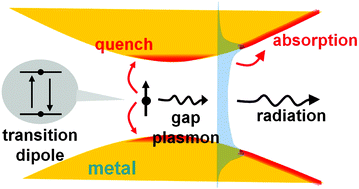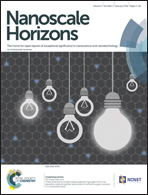Light emission in nanogaps: overcoming quenching
Abstract
Very large spontaneous-emission-rate enhancements (∼1000) are obtained for quantum emitters coupled with tiny plasmonic resonance, especially when emitters are placed in the mouth of nanogaps formed by metal nanoparticles that are nearly in contact. This fundamental effect of light emission at subwavelength scales is well documented and understood as resulting from the smallness of nanogap modes. In contrasts, it is much less obvious to figure out whether the radiation efficiency is high in these gaps, or if the emission is quenched by metal absorption especially for tiny gaps a few nanometers wide; the whole literature only contains scattered electromagnetic calculations on the subject, which suggest that absorption and quenching can be kept at a small level despite the emitter proximity to metal. Thus through analytical derivations in the limit of small gap thickness, it is our objective to clarify why quantum emitters in nanogap antennas offer good efficiencies, what are the circumstances in which high efficiency is obtained, and whether there exists an upper bound for the maximum efficiency achievable.

- This article is part of the themed collection: Focus article collection

 Please wait while we load your content...
Please wait while we load your content...